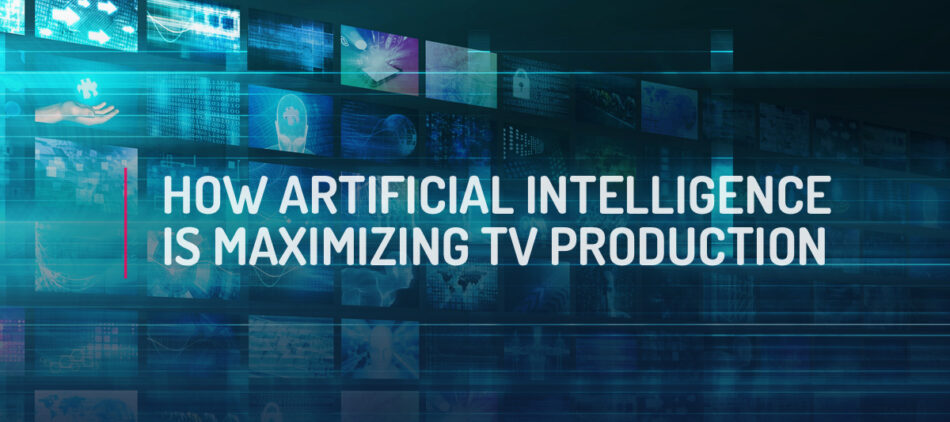
How Artificial Intelligence is Maximizing TV Production
AI is helping modernize the industry, but TV organizations could use AI to even further enhance their operations and bottom line.
In days prior, metadata in the TV industry came through labels we typed using an electric typewriter and big orange stickers we put on the spine of the videotape cases. These days, creating metadata in TV production is often neglected because it can be tedious, time-consuming and expensive to produce.
Making the modern TV experience seamless and simple is laborious, despite technological leaps. Complex, behind-the-scenes processes need to happen in order to offer television customers the experience they expect from streaming services and traditional linear broadcast.
Tasks such as metadata creation, captioning, content licensing, post-production work and content packaging are daunting, but they are important pieces of the revenue puzzle that cannot be ignored. As these tasks become more complex, TV organizations are looking for innovations that streamline time-consuming day-to-day tasks such as these.
Why AI?
AI is revealing itself to be both a necessity and differentiator to help organizations in the TV industry handle massive amounts of content much more efficiently. It can help TV organizations track, analyze and monetize their content more effectively.
The emerging part AI plays in the TV industry is the focus of Veritone’s latest industry report,“Pulse Check on AI Adoption in Television.” For the report, we surveyed more than 100 TV organizations about their familiarity and use of AI to get a better idea of how it’s being deployed and the impact it’s making.
How TV companies are using AI
For the TV companies we surveyed, AI implementation is becoming the norm, with 54% of respondents saying that they’re currently making a conscious and strategic effort to implement AI in their organizations. However, these efforts aren’t being pursued urgently. Sixty percent of respondents said they’re only likely to use AI tools five years from now.
Why do these organizations feel comfortable pushing off AI efforts for half a decade? Responses overwhelmingly point to uncertainty. Half of survey respondents cited a lack of knowledge about potential benefits as a factor. Respondents also cited budget restrictions, the belief that AI won’t mesh well with established workflows and concerns that AI won’t deliver on promised benefits as reasons for their hesitancy.
These results show that fulfilling the promise of AI may rest on greater awareness and education, with wider implementation coming once they experience the value of automation firsthand.
In addition, for those who are using AI, its use in TV production processes is in its infancy. AI is used in asset metadata creation for 40% of respondents; 37% for content recommendations; 33% for captioning, subtitling and scripting; 30% for encoding and transcoding; and 28% for graphics creation. While these companies are no doubt benefiting from reduced costs and time savings by using AI to complete these tasks, a whole realm of operation-enhancing features are being left on the table, from audience analytics to advertising performance tracking.
Use cases
In practice, there are many ways in which AI is improving the workflows of people working in the industry.
In captioning, our customers have seen success with transcription and speaker separation technology. Separating each speaker’s lines automatically makes captioning work much more efficient than manually editing a block of transcripted text.
In post-production, our customers over the past year have used face recognition, shot detection and transcription to process a combined 4,000 hours of episodic television through aiWARE to repurpose their archival material. AI not only allows them to scale the indexing of the content, which would have taken years for their current workforce to complete, but also aid in clip selection to generate new creative vignettes to monetize through social media and further promote their shows and brands.
Another primary use case that benefits our customers is leveraging artificial intelligence to monitor broadcasts and create data visualizations around ad performance, analytics and attribution using a solution such as Veritone Attribute. A TV station or network can verify and measure the efficacy of prerecorded ads as well as live and organic reads by connecting to their advertisers’ website analytics and correlating it with the detection of the creative content.
How companies plan to expand their use of AI
As more companies begin employing AI, their primary motivation is clear: It’s a competitive necessity. The majority of respondents identified the main driver of their use of AI as the opportunity for competitive products, services, innovation and differentiation, making differentiation a more significant motivator than even cutting costs and saving time.
Within three to five year, 60% of respondents plan to use AI for asset metadata creation; 58% for captioning, subtitling and scripting; 49% for content recommendations; 44% for encoding and transcoding; and 44% for video editing.
Learn more
Want to learn more about how TV organizations are using AI-enabled solutions to streamline processes, boost revenue and alleviate the burden on hardworking employees? Download the report here, and watch the webinar “The Untapped Potential of AI in TV Production.” This webinar was part of the IABM Future Trends Channel online event.